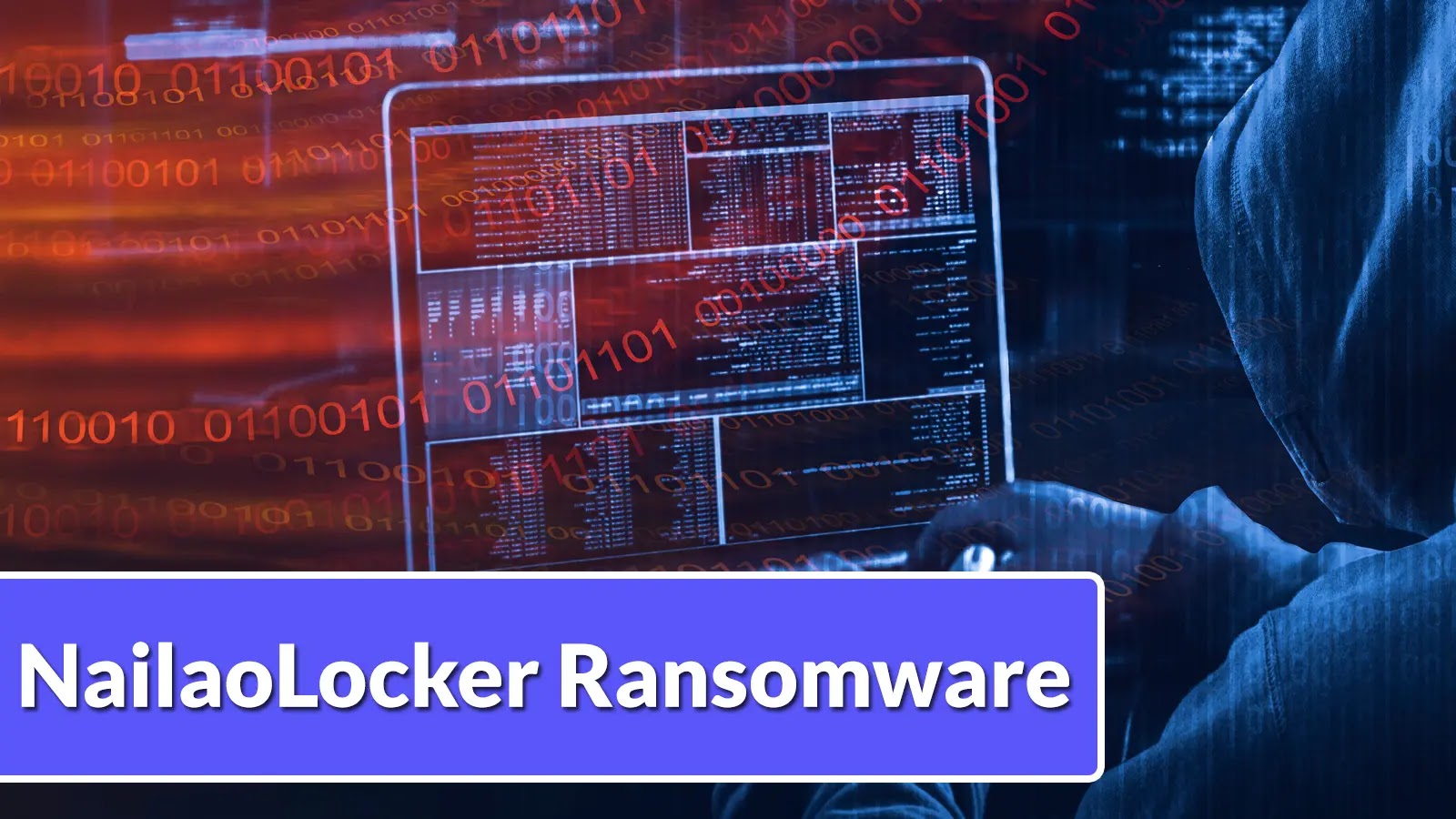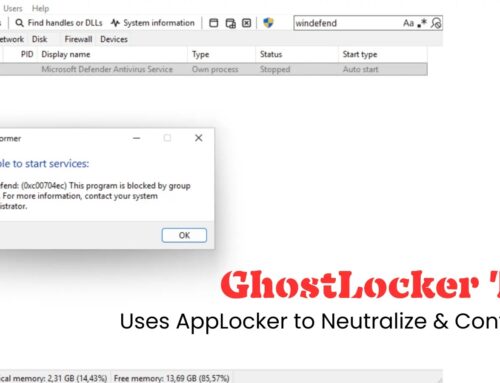
NailaoLocker Ransomware Attacking Windows Systems Using Chinese SM2 Cryptographic Standard
A disturbing new trend in ransomware operations has emerged with the discovery of NailaoLocker by FortiGuard Labs. This sophisticated strain, targeting Windows systems, marks a significant departure from conventional encryption methods by incorporating China’s SM2 cryptographic standard. This development signals a concerning shift toward region-specific cryptographic implementations within cybercrime, raising new challenges for cybersecurity professionals globally.
NailaoLocker: An Unprecedented Cryptographic Shift
NailaoLocker is not just another ransomware variant; it represents a substantial evolution in the threat landscape. Its distinguishing characteristic is the integration of the SM2 cryptographic standard, a public-key algorithm developed by China and part of its national cryptographic suite (GM/T 0003-2012). This is the first documented instance of a major ransomware operation leveraging SM2, previously confined to state-sponsored activities or specific regional applications.
The name “NailaoLocker” itself is derived from the Chinese word for ‘cheese’, an unusual but perhaps memorable moniker for such a potent threat. This choice, combined with the use of SM2, strongly suggests an origin or focus tied to the Chinese-speaking cybercriminal underground. The implications are profound, as it indicates attackers are adapting to and perhaps even leveraging regional cryptographic expertise to enhance their operations and potentially complicate decryption efforts for international security researchers.
Technical Implications of SM2 Integration
The adoption of SM2 over more globally recognized standards like RSA or ECC (Elliptic Curve Cryptography) for key exchange and encryption in ransomware presents several technical challenges. While not inherently less secure than its Western counterparts, SM2’s distinct mathematical properties and implementation nuances mean that standard cryptographic libraries and tools may not readily support its decryption. This could significantly hinder incident response teams attempting to recover encrypted data without access to specialized SM2-compatible tools or algorithms.
Furthermore, the use of a region-specific standard might suggest an attempt to evade detection by security products primarily designed to identify patterns associated with common cryptographic algorithms. While modern security solutions are increasingly adaptable, the novelty of SM2 in this context could provide an initial window of opportunity for the ransomware to execute its malicious payload undetected.
NailaoLocker’s Operational Tactics
While the focus is on its cryptographic innovation, NailaoLocker is expected to follow conventional ransomware attack chains for initial compromise and lateral movement within compromised networks. This typically involves:
- Initial Access: Phishing emails with malicious attachments, exploitation of unpatched vulnerabilities, or brute-forcing RDP (Remote Desktop Protocol) credentials.
- Payload Delivery: Dropping the ransomware executable (e.g., via PowerShell, scheduled tasks, or legitimate remote access tools).
- System Analysis: Identifying valuable files and network shares for encryption.
- Encryption: Utilizing the SM2 standard to encrypt files, rendering them inaccessible.
- Ransom Note: Leaving instructions for victims on how to pay the ransom, typically in cryptocurrency, often Bitcoin or Monero.
The core innovation, as FortiGuard Labs highlights, lies specifically in the encryption phase, making the recovery of data without the decryption key uniquely challenging without bespoke SM2-aware tools.
Remediation Actions and Proactive Defenses
Defending against advanced ransomware like NailaoLocker requires a multi-layered security strategy, combining proactive measures with robust incident response capabilities. Organizations must prioritize the following:
- Endpoint Detection and Response (EDR)/Extended Detection and Response (XDR): Deploy and properly configure EDR/XDR solutions for continuous monitoring, threat detection, and automated response capabilities across endpoints and networks.
- Regular Backups: Implement and regularly test a comprehensive backup strategy. Ensure backups are immutable, isolated, and stored both on-site and off-site, preferably offline, to protect against encryption.
- Patch Management: Maintain a rigorous patch management program to promptly apply security updates for operating systems, applications, and network devices. Many ransomware attacks exploit known vulnerabilities, such as those listed in the CVE-2023-28252 (Microsoft Excel vulnerability related to remote code execution).
- Network Segmentation: Segment networks to limit lateral movement. If one part of the network is compromised, segmentation can contain the breach and prevent the ransomware from spreading widely.
- User Awareness Training: Educate employees about phishing, social engineering, and safe browsing habits. A significant number of ransomware incidents originate from human error.
- Strong Access Controls: Implement the principle of least privilege, multi-factor authentication (MFA) for all services, especially remote access like VPNs and RDP.
- Incident Response Plan: Develop, test, and refine an incident response plan specifically for ransomware attacks. This plan should include communication protocols, roles and responsibilities, and step-by-step recovery procedures.
- Threat Intelligence: Stay informed about emerging threats and attacker tactics, techniques, and procedures (TTPs) by subscribing to reputable threat intelligence feeds, like those often provided by security vendors or government agencies.
Relevant Tools for Detection and Mitigation
| Tool Name | Purpose | Link |
|---|---|---|
| Endpoint Detection & Response (EDR) Solutions | Detecting malicious activity, providing visibility into endpoint behavior, and enabling rapid response. | (Vendor-specific, e.g., CrowdStrike Falcon, SentinelOne) |
| Network Intrusion Detection/Prevention Systems (NIDS/NIPS) | Monitoring network traffic for suspicious patterns and known attack signatures. | (Vendor-specific, e.g., Snort, Suricata, FortiGate) |
| Vulnerability Scanners | Identifying unpatched systems and misconfigurations that ransomware actors exploit. | (e.g., Nessus, OpenVAS, Qualys) |
| Security Information and Event Management (SIEM) | Aggregating and analyzing security logs from various sources to detect anomalies and aid incident response. | (e.g., Splunk, IBM QRadar, Microsoft Azure Sentinel) |
| Backup and Recovery Solutions | Ensuring data availability and business continuity post-attack. | (e.g., Veeam, Rubrik, Cohesity) |
The Future of Cryptographic Diversity in Cybercrime
The emergence of NailaoLocker signifies a critical evolution in the ransomware landscape. Its use of the SM2 standard indicates a willingness among cybercriminals to adopt less common, region-specific cryptographic methods, potentially to complicate decryption efforts and evade standard security tooling. This trend underscores the importance of continuous vigilance, adaptability in cybersecurity defenses, and a comprehensive understanding of global cryptographic standards. As the digital battleground expands, staying ahead requires not only robust technical controls but also an awareness of the diverse and evolving tactics employed by threat actors worldwide.





